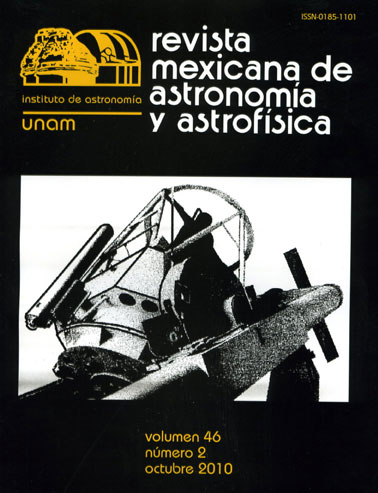Hypercritical accretion onto a magnetized neutron star surface: a numerical approach
Main Article Content
Abstract
The properties of a new-born neutron star, produced in a core-collapse supernova, can be strongly affected by the possible late fallback which occurs several hours after the explosion. This accretion occurs in the regime dominated by neutrino cooling, explored initially in this context by Chevalier (1989). Here we revisit this approach in a 1D spherically symmetric model and carry out numerical simulations in 2D in an accretion column onto a neutron star, considering detailed microphysics, neutrino cooling and the presence of magnetic fields in ideal MHD. We compare our numerical results with the analytic solutions and explore how the purely hydrodynamical as well as the MHD solutions differ from them, and begin to explore how this may affect the appearance of the remnant as a typical radio pulsar.
Article Details
How to Cite
Bernal, C. G., Lee, W. H., & Page, D. (2010). Hypercritical accretion onto a magnetized neutron star surface: a numerical approach. Revista Mexicana De Astronomía Y Astrofísica, 46(2). Retrieved from https://www.revistas.unam.mx/index.php/revmexaa/article/view/20580
